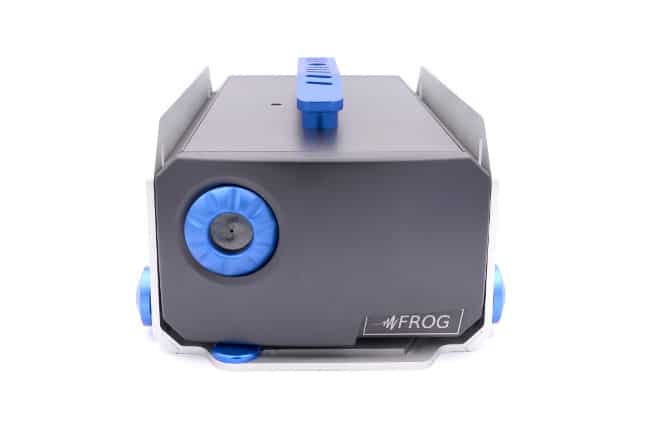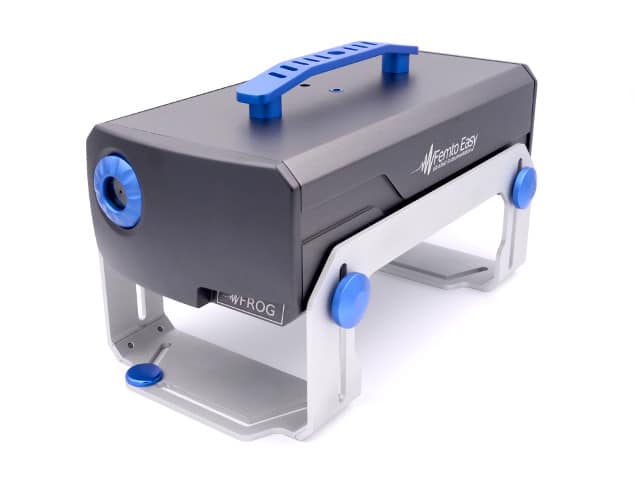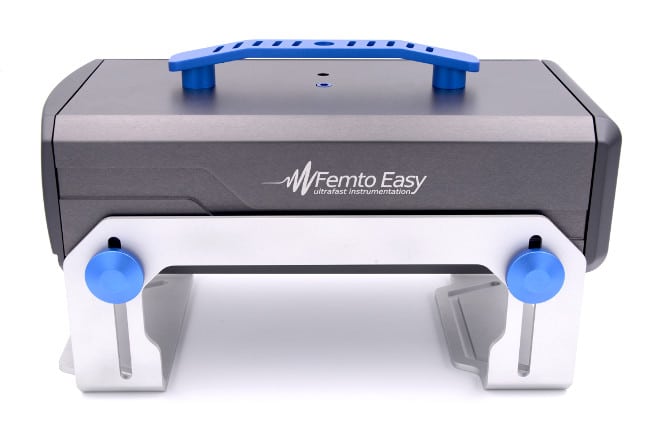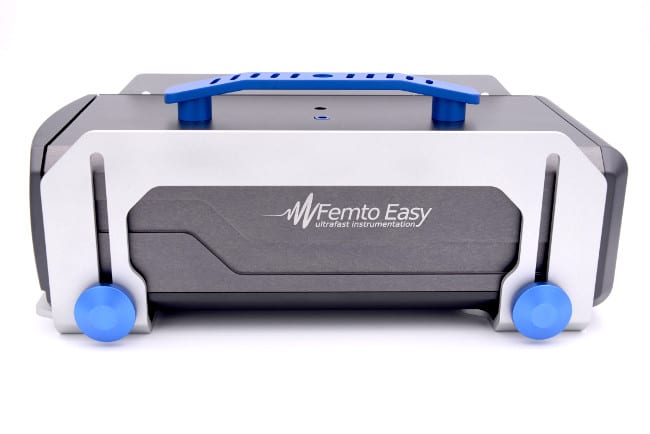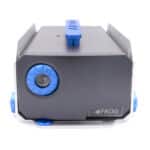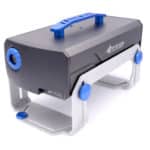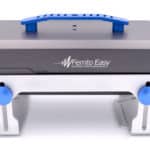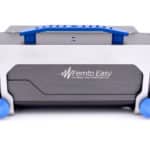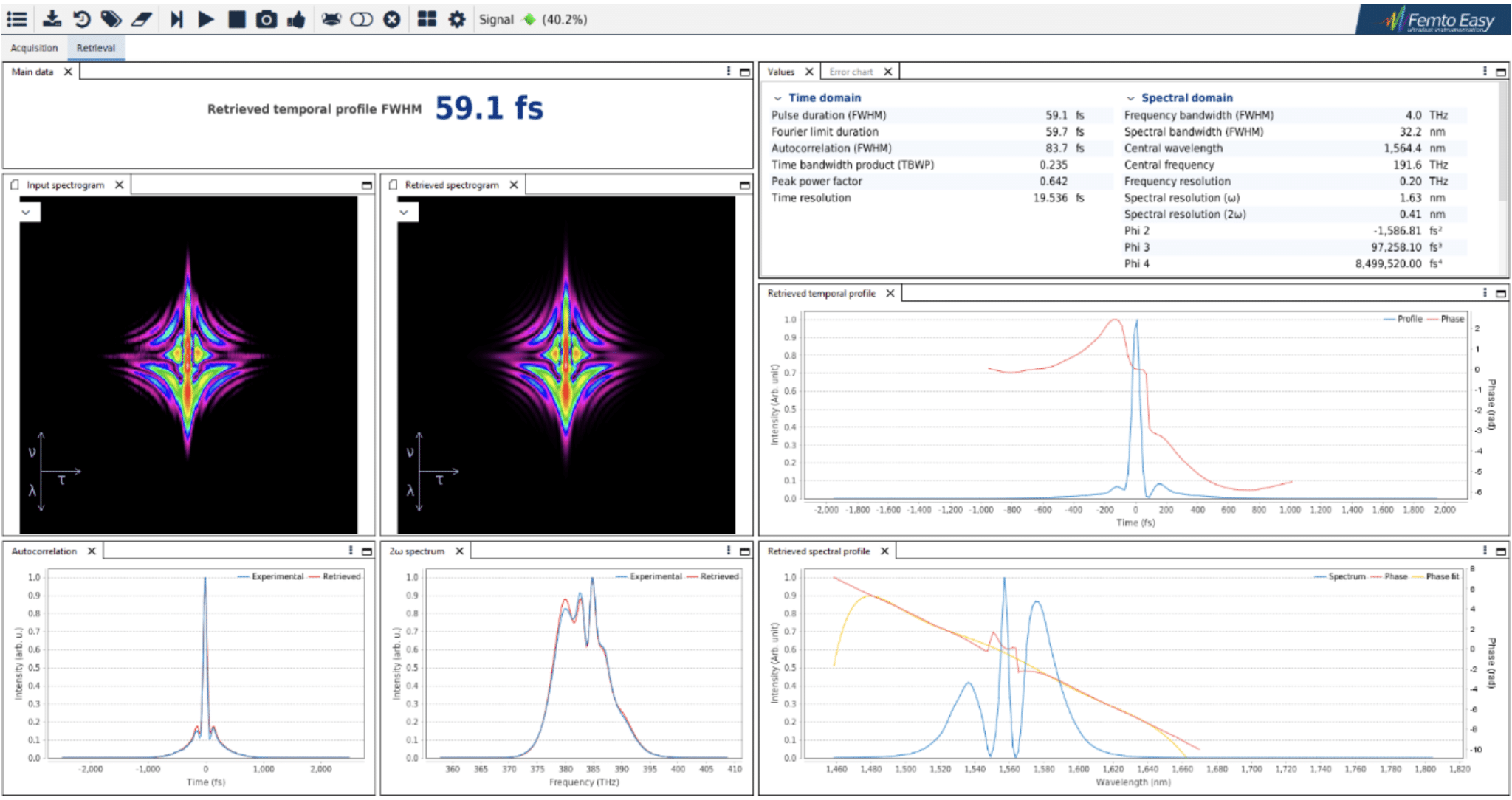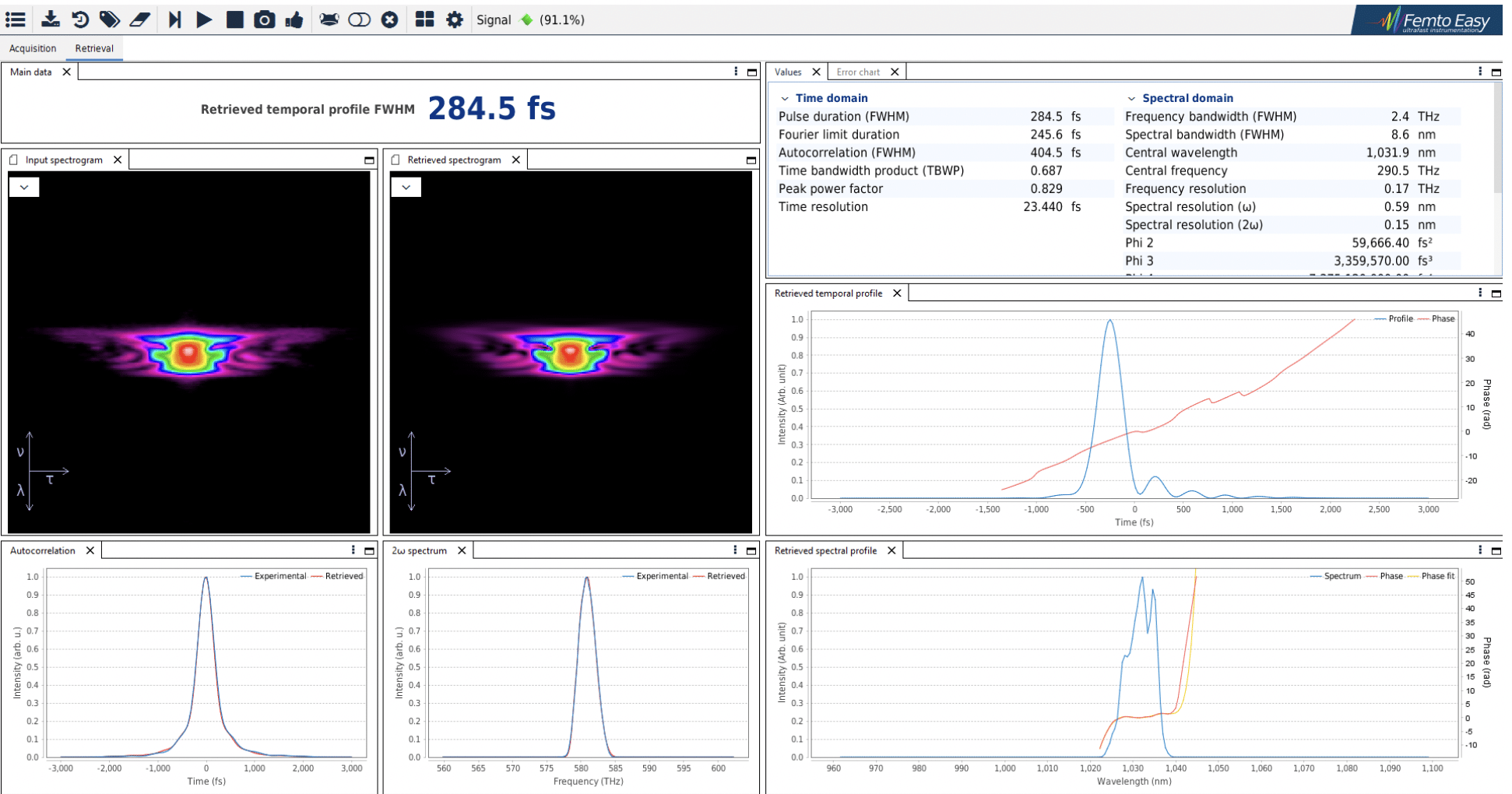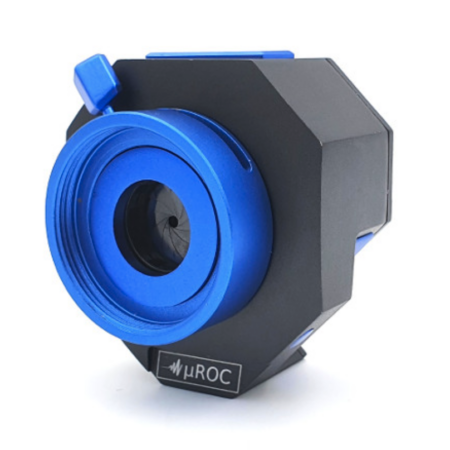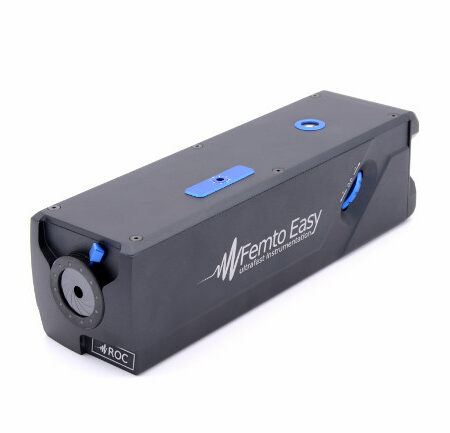FemtoEasy FROG System for Ultrafast Laser Characterization
FROG stands for Frequency-resolved Optical Gating. The ultrafast FROG system is an instrument for complete characterization of ultrashort pulses, thus it can retrieve the full time-dependent electric field, and the equivalent optical spectrum with spectral phase. In other words, FROG allows you to know the duration of your pulses, but also how to deal with spectral phase to reach the shortest possible duration.
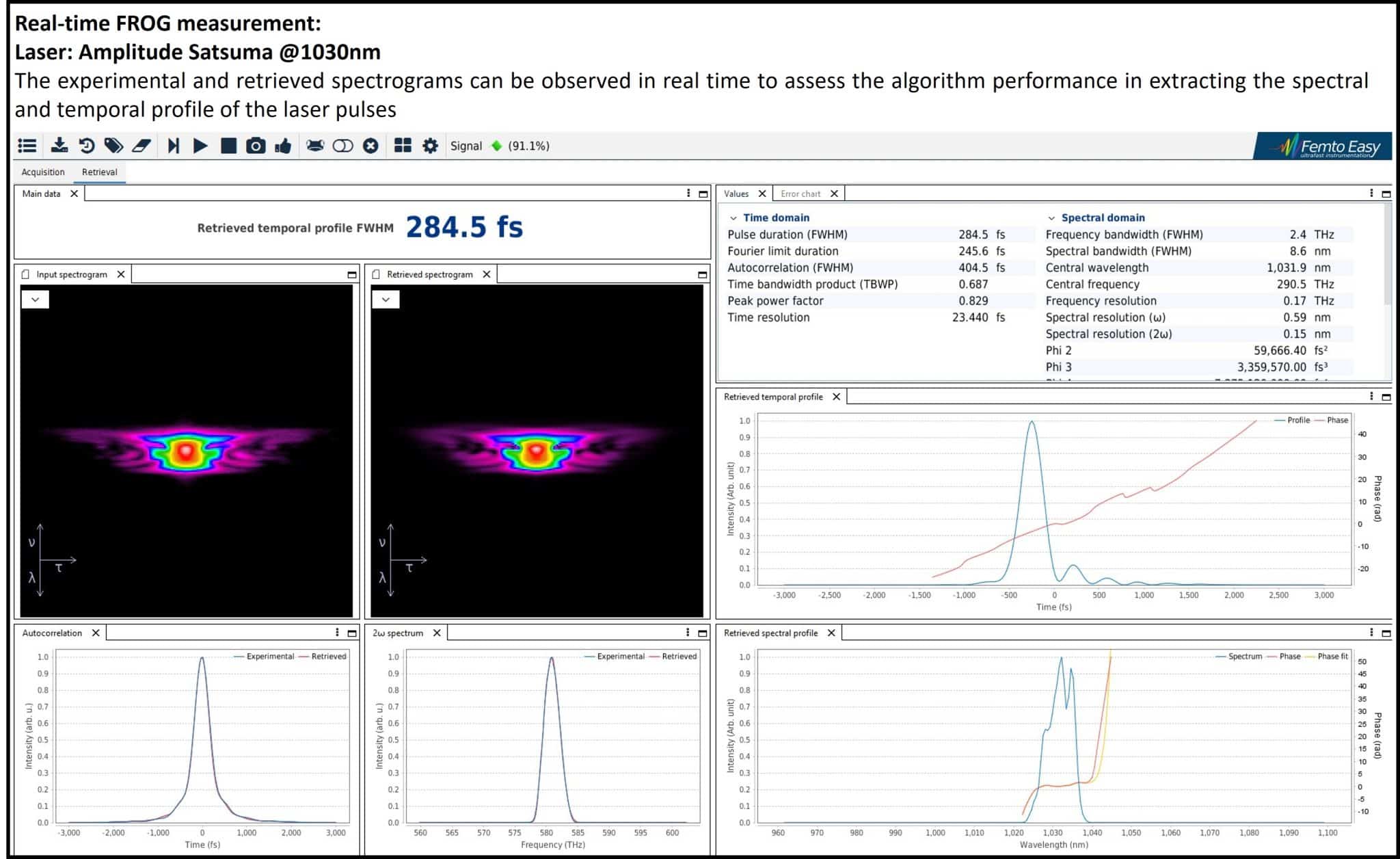
We offer two types of Frequency-resolved optical gating (FROG) systems from FemtoEasy:
- The Fast FROG is a single-shot FROG System, thus it needs one single pulse to measure the duration. Its innovative algorithm allow a real-time pulse retrieval.
- The MS-FROG is a multi-shot FROG System. It uses an optical delay line to scan the delay, and each pulse allows to know the intensity for a particular delay. It can measure pulses with energy as low as 50 pJ. The same device can measure very short pulses and long pulses, from 5 fs to 80 ps!
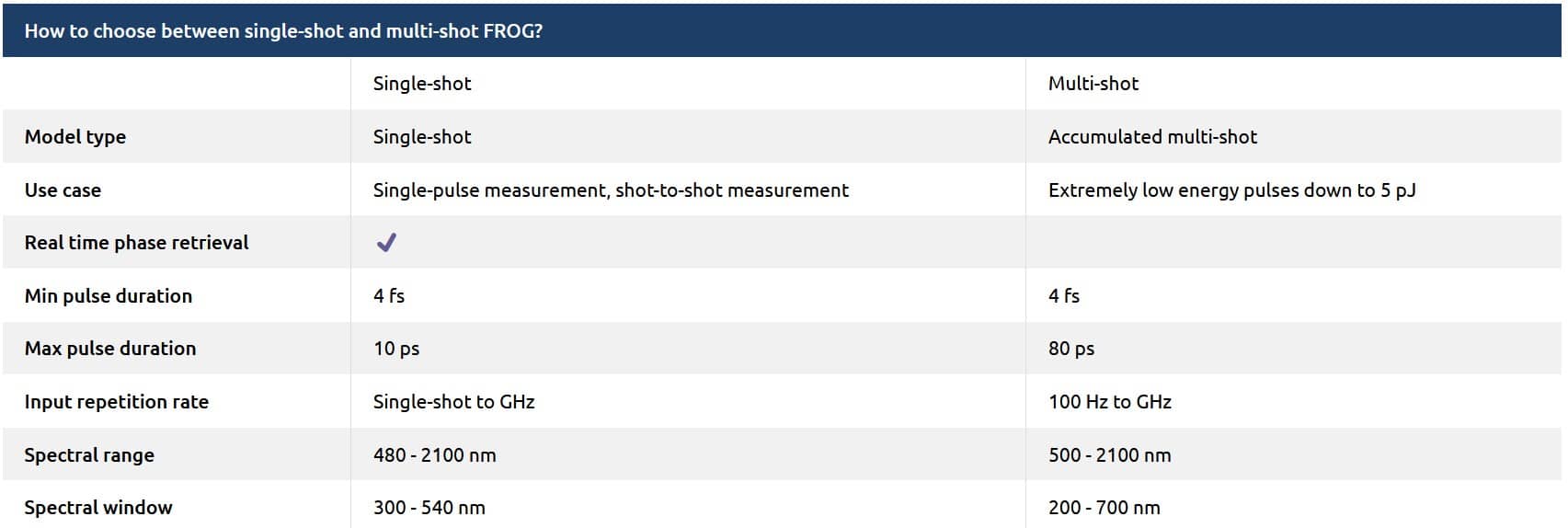
Single-Shot FROG
Based on Second Harmonic Generation, Fast/Single-Shot FROG is reliable and compact. Incorporating key design elements like the wavefront division technique and our mini imaging spectrometer (MISS), it ensures user-friendly operation and versatility, resulting in precise measurements. With seven models offered, spanning pulse durations from sub-5 fs to 10 ps across a wide spectral range, it caters to various needs. Two distinct designs are available: one optimized for long pulses relying on transmission optics, and another for ultrashort pulses, which is fully achromatic.
Multi-Shot FROG
MS-FROG, short for Multi-Shot Frequency Resolved Optical Gating, is based on second harmonic generation, ensuring reliability and compactness. Tailored for sources with less than 1 nJ energy per pulse, it covers pulse durations from 50 fs to 40 ps in its standard version. Its high scan speed enables real-time measurement and optimization operations, with the MS-FROG-LP achieving a scan rate of 130 ps/s, the fastest in the market. Additionally, the MS-FROG-SP offers dual-mode capability for measuring both ultra-short and long pulses (standard mode for pulse duration >=> 50 fs and fine-scan mode for pulse < 50 fs). With a newly developed algorithm, instantaneous extraction of spectral information enables real-time pulse reconstruction. Installation and usage of the MS-FROG are effortless.
Advantages of Femto Easy ultrafast FROG systems over competitive technologies
- No moving parts (single-shot FROG)
- Broad available spectral range (480 – 2100 nm)
- Can work for both single-shot and low-repetition rate and high-repetition rate applications (single-shot FROG)
- Very sensitive, measurements performed with mW level lasers at 100 MHz (multi-shot FROG)
- Compact and robust
- Easy to align
- Spectrometers manufactured by Femto Easy (no need to rely on third parties)
- Full wavelength flexibility by just swapping spectrometers
- Proprietary FROG algorithm for quick and accurate retrieval of even complex pulses
- Can work with both compressed and highly chirped pulses
For more information, check out our ultrafast laser measurement application page.
User Publications
Spatio-temporal pulse cleaning in multi-pass cells
Optica Open – 2023
In vivo three- and four- photon fluorescence microscopy using a 1.8µm femtosecond fiber laser system
Biomedical Optics Express – 2023
Near-single-cycle pulses generated through post-compression on FAB1 laser at ATTOLAB-Orme facility
EOS Annual Meeting – November 2021
Laser pulse duration optimization with numerical methods
Journal of Accelerator Conferences Website – 2022
Generation of sub-half-cycle 10µm pulses through filamentation at kilohertz repetition rates
Optics Express – November 2020
FROG Options
Additional crystal
The default Fast FROG configuration includes one crystal. To extend the wavelength range of the device, additional plug&play crystals can be ordered and swapped within the system in seconds
Additional MISS spectrometer
The default Fast FROG configuration includes one imaging spectrometer MISS. To extend the wavelength range of the device, additional plug&play MISS spectrometers can be ordered and swapped within the system in seconds
Enhanced detection
Replacement of the default camera embedded in the Fast FROG by a higher performance one to increase the specifications of the system (better temporal resolution and spectral resolution, single pulse extraction up to 150 kHz)
Fiber input connector
Plug&play collimation module with fiber connector. Can be mounted on the Fast FROG to easily switch the input from free-space to fiber. No alignment required.
High dynamic range
Software mode to increase the dynamic of the Fast FROG signal acquisition from 12 to 16 bits. Not compatible with pure single-shot measurement as 2 images are necessary to build one FROG trace
Low energy
Internal module to increase the sensitivity of the Fast FROG when the laser power is too weak
Phase loop
Software mode to use the Fast FROG to perform spectral phase feedback loop with a pulse shaper (contact use to check pulse shaper compatibility)
Phase matching
Default Fast FROG configuration works for a given central wavelength. Phase matching allows tuning the SHG crystal to measure different central wavelengths with the best SNR
Pulse Front Tilt / Spatial Chirp measurement
Measurement of spatio-temporal couplings in the software. Correction of FROG trace accordingly for better accuracy of the retrieval
Small beam
Internal module to increase the input beam diameter when it is too small for the Fast FROG (necessary for beams typically in the range of few mm or less)
Trigger
Synchronization of the Fast FROG detection to an external signal for accurate laser single pulse extraction up to 80 kHz (150 kHz with the Enhanced detection option)

